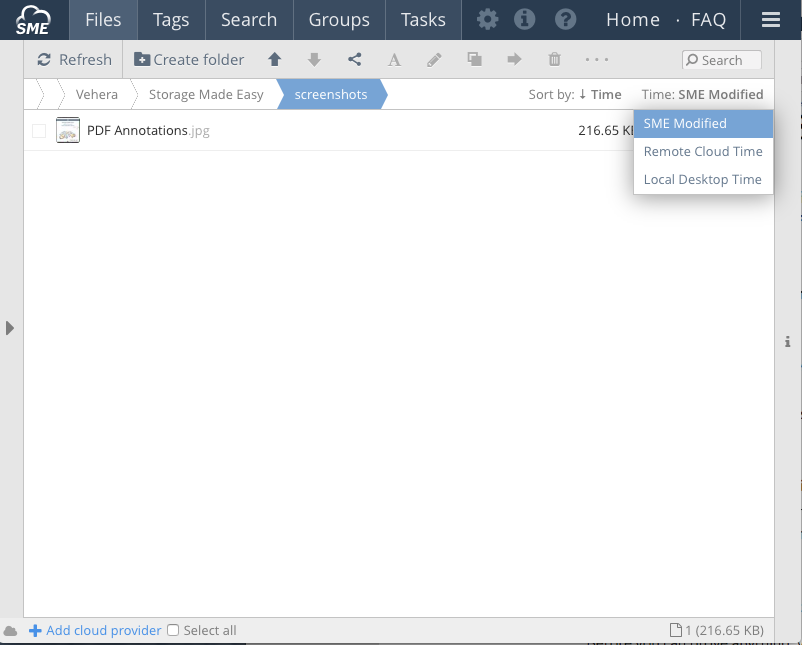**This is an old revision of the document!**
Understanding file timestamps
Access Anywhere stores file metadata including filenames and timestamps. It does not store file data.
Some timestamp metadata is synchronized with that of the storage provider. This may be different for different types of storage. Other timestamp metadata is created by Access Anywhere based on file activity.
1 File Timestamps
From the File Info Pane you will see four possible timestamps. They are shown in your local time (as determined from the browser).
They are also visible if you hover over the time field within the folder listing:
The fields are:
- Local Desktop Time- The modification time of the file before it was uploaded to cloud storage.
- Storage Modified Time - The last modified time.
- Storage Created Time - This is the time the file was indexed by Access Anywhere.
- <Storage Name> Time - This is the modification time of the file as synchronized with remote storage.
- Last Accessed Time - This is the time the file data was last access through Access Anywhere such as through a download.
File Manager Listing
2 Uploading files from the web
If files are uploaded from the web File Manager then original modified timestamps are preserved except for the Safari browser which will use the timestamp of when the files was uploaded for the modified time as it is not possible from the Safari to obtain the modified time on upload.
3 Uploading files from the desktop
Files that are uploaded from a Mac, Windows or Linux Drive client, or via sync should have the timestamps fully preserved.
4 Uploading files over protocol adaptors
If files are uploaded over CloudDav or CloudFTP protocol adaptor then timestamp preservation depends on the client tool used and whether it issues the command to change the file timestamp.



